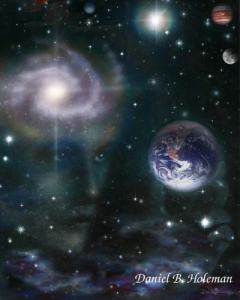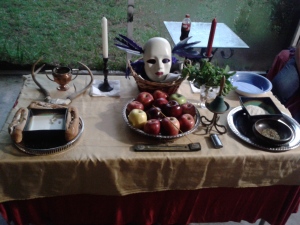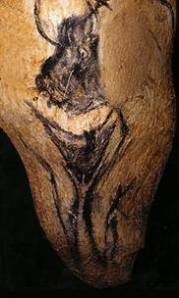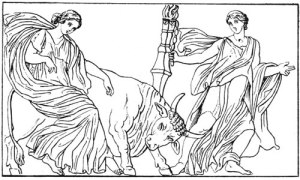
My first time ever writing about Hekate can be found here. I even wrote an oracle one time and it can be found here. I should get back to writing those when they are for the community at large. These are trying times, and I know people want direction in their lives. Corporate oracles can be taken in and may speak to more than one individual. It might even be a prophecy to the world at large.
Note: When I mean prophecy I do not necessarily mean an oracle for the future all of the time.
I’d like to describe my Hekatean adventure, or how I and Hekate built our relationship all of these years.
Jason and the Argonauts
In 1963 a film was made titled “Jason and the Argonauts.” a film by Don Chaffey and featuring an actor named Todd Armstrong in the title role. Visual effects were done by the famous Ray Harryhausen of creature dynamation fame. The beautiful actress Nancy Kovak appeared as Medea, the High Priestess of Hekate.
I watched the film for the first time when I was 8 years old. I was immediately taken with the mythology. However, when I saw Medea, I fell in love. At first I wasn’t aware of who she was. But what enamored me was her dance in the Temple of Hekate and the depiction of the statue. The clip of the dance is below:
When Jason is captured, Medea struggles to figure out what to do. Then she prayed to the Goddess Hekate – “Queen of Darkness” – to aid her. It was a thrilling moment, as I was exposed to something exotic. They didn’t cover Hekate in my class lesson on Greek Mythology; and there was something about Hekate and Medea…
That night I had a dream. I dreamed a symbol came to me with regards to Hekate. When I woke up I drew it in my journal at the time. As I researched my dad’s library and the school library, I couldn’t find anything on the symbol or on Hekate. So I left it alone, wondering how I could reach her.
As I studied the occult growing up, I became interested in Witchcraft. I didn’t want to be involved in Santeria like my mom was. It just wasn’t something I wanted. However, my godmother read Tarot, could interpret symbols in the cup of coffee after it was drunk, and was able to contact spirits. Now that interested me. I just took it in a different direction.
I found a book on Witchcraft at my local library. There was a chant and spell you had to repeat 9 times while in the center of a circle. Keeping this a secret, I went in my backyard. I took our long hose and made it a circle out of it. I took some branches and made a pentagram out of that. I then sat in the middle. It was midnight. I repeated the chant to dedicate myself to the Craft and spirits. The wind whipped up and at the final saying a lightning bolt flashed across the night sky, and it began to pour. I quickly ran inside so the book wouldn’t get wet. It was done. I was a witch.
Pause
My life in the Craft, however, paused. We converted to a Holiness Pentecostal church (except my dad) and our spiritual direction changed. Well, in a way. I told you about some of my biography here, especially the book burning part. I kept hidden some of the books, especially Marion Zimmer Bradley’s “Mists of Avalon.” Truth be told, I became a fanatic. Well, outwardly anyway. I tried so hard to be ultra-Christian because deep down inside I was struggling with my sexuality and my penchant for Neopaganism and Witchcraft. I wanted to be a witch. A Druid even. I wanted my spiritual life to make sense to me and to accept me for who I was. It was a very nervous breakdown time.
This entire time, every now and then Hekate popped up in my memory. I wanted to rewatch the film and see Medea dance and pray to that triple-headed statue. Little did I know at the time that Hekate is also the Goddess of witches.
Restart
When I left the church, I struggled spiritually where to go. I knew I needed religion in my life. There was absolutely no question about that. I needed a buffer for my skills in healing and prophecy as well as seeing spirits and sensing energy. Many of you reading can probably relate to growing up different, experiencing trauma, and knowing that your life was meant for more.
I studied what I could before becoming a Neopagan and, more specifically, a witch. I’ve already written how Druidry was my first foray into Neopaganism, and it helped me a lot. It brought me the peace that I needed with regards to Christianity and the path calling to me.
To be honest, I didn’t know what I was missing when I attained the grade of Druid (you don’t automatically become one, but train towards that specific office if you want to). I was happy. Content. But, ever the challenger, I wanted to know what it was to be a witch. When that happened, I remembered the Goddess Hekate and she made an impression again in my life.
Hekate and the Craft
I was given so much misinformation on Witchcraft in the beginning. The more I spent time around people claiming to be witches, the more I realized they treated every book by an author with a name as infallible. I read books, too, and my dad taught me to be a critical reader and always ask questions. Apparently asking too many questions around these witches was anathema, probably because it caused them to question as well. I don’t know. But this critical mind was always attacked for being a know-it-all. I even had “friends” I knew tell others that I thought I was better than anyone else, even better than the Gods! I lost a lot of people. I’m sure many of you have also lost a lot of friends because of misinformation or questioning people’s beliefs and values.
Be that as it may, at one point I began to write rituals. They were basic, but we all start somewhere, and there is nothing wrong with basic. Simple circle casting, calling the four directions, and meditations. As a witch, I now had access to some exposure to other authors in the Neopagan and Witchcraft fields who wrote about her. Of course, once again there was a lot of conflicting information on her. I had to dig and figure this out myself.
Unlike others, I didn’t really have an active altar or images of the Gods. I couldn’t afford it. I wasn’t entirely sure I needed it anyway. As a Christian, all you had to do was pray, and the Christian God was there. If he can do that, why not the Goddess? So early on I learned about talking to her and meditating. I had no scripture to lead me, but I had my imagination and will, and that seemed enough.
I finally felt her speak to me one day after years of doing this. I felt her nudging to lead dark moon rituals in a certain format. They were:
- Wash hands and face with purified water.
- Anoint foreheads with blessed oil (I used olive oil a lot).
- Create a circle, whether astrally with blade or with cornmeal, stones, or flowers on the ground in the physical.
- Honor the Four Directions.
- Pray to the ancestors.
- Pray to the Hearth Lady.
- Invoke the Gods.
- Meditate, dance, or just bow down with music chanting and worshiping.
- Thank the Gods.
- Thank the Hearth Lady.
- Thank the ancestors.
- Thank the Four Directions.
- Place a bit of food from every dish onto a plate. Grab some wine. Dig a pit where the ancestors are and pour the food and drink in there to feed them and thank them.
- Feast.
This was my format for years. The dark moons became my hosted celebration for Hekate. Then Hekate led me to learn a form of Stregheria, or Sicilian-Continental Craft. It was from the family of the late Dr. Leo Martello, a prominent figure in the early Craft movement here in the States.
As I was learning and doing, I felt ready to dedicate myself formally to her. So, one night on November 16th, 2009 when it was the dark of the moon, I formally told her that I was ready for us to be with each other, I wanted to be her priest, and to start my life with her there.
Visions
That night, I had a dream-vision unlike anything I have ever had. I astral traveled across from my home across a great sea. It was dark. I heard the waves and the thunder. It was if the astral realm was alive and potent with energy. As I flew, I looked at my arms and there were wings. I glanced at myself over the ocean and I was a barred owl! Strange I know.
That’s when I saw it – a great tree in the center of the sea. Was this the World Tree? It seemed so. The 7 Classical planets surrounded the tree (Mercury, Venus, the Sun, the Moon, Mars, Jupiter, and Saturn). The tree was large, old, and its roots went deep into the sea. I shapeshifted into something else, and followed a road less traveled beneath the roots. I followed a river and saw other rivers as well. Finally, there was a great lake along a certain route. Here, I was taken in and baptized in the Underworld. It was cold…colder than anything I had ever felt.
The Underworld accepted me. I woke up.
Seven Days
For the next seven days, I had what seemed like a thousand flashes and memories. I was revealed the secret name of the Sicilian Goddess, and was taken to a life in a place called Samothrace (I looked it up later). I did not sleep at all. My mind was racing with so much information.
That’s when it happened: my dreams became gateways again. I was “awake,” after having slept for so long when I left the church. I had some gifts then, but I shut down completely when I left. This freshness from the Goddess awakened something in me I had not felt in a really long time.
On the 9th day after that initial dream-vision, Hekate came to me and asked me for a contract: I would become her oracle, and she would guide me. This would place me in a precarious position, as I learned that any initiation comes with its own costs. But I accepted. I was awake now, and I wanted to remain that way. I was far from perfect at that time. Far. From. Perfect. She didn’t ask me to be that way in any case. But I knew being an Underworld creature meant struggling with my Shadow quite a bit, involving dancing with my demons when need be. On their part anyway.
Conclusion
Herein I have told the tale of my travels in my Hekatean Adventure. Hekate has always been with me, but there needed to be a time when I, in turn, was ready for her. She never forced the relationship. She never pushed her agenda onto me. She only responded when I finally did, and it was then that I became contracted to her. The Underworld is a wonderful place, and I admit I am on the “dark side” when it comes to my occult workings. But that’s because we always need a balance, a harmony, between the light and the dark. Some of us go to one end, and others of us at another. But together, we can manage the energies and blend them when need be. So don’t be afraid of her, dear reader and fellow traveler. The Goddess is only scary to the uninitiated. She remains there. She called me to StrixCraft. She it is who stated that those called to her are of the Strix: the owls. We are her owl people. What’s next? That’s an enigma only your worship and travels with her will tell in time.
Eirene kai Hugieia!
(Peace and Health!)
Oracle










